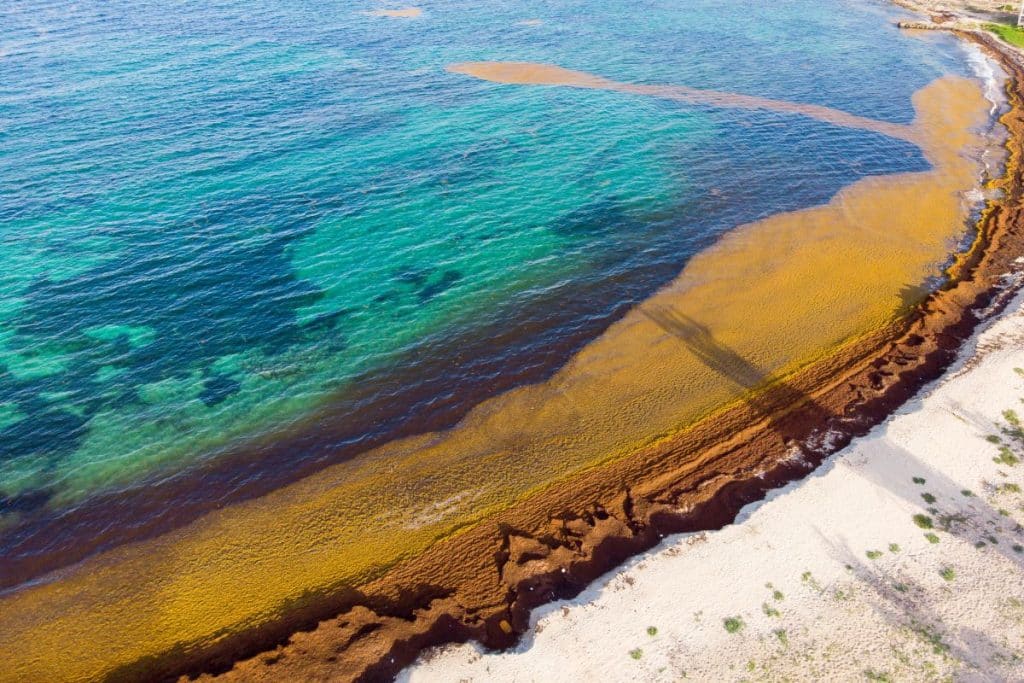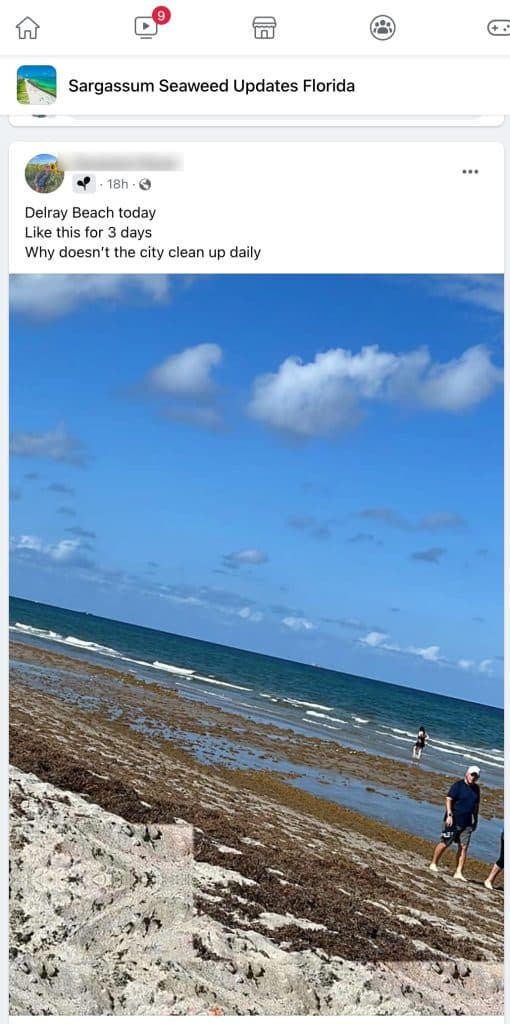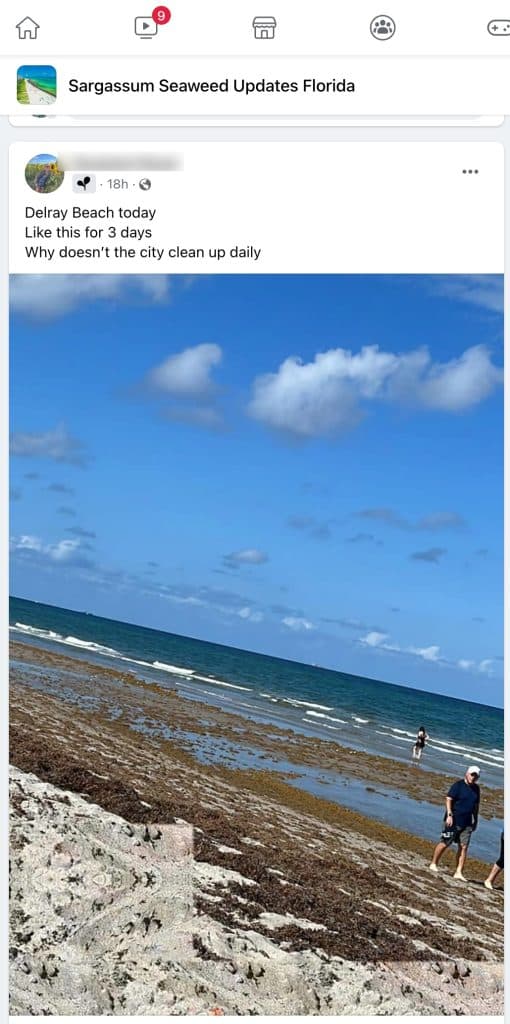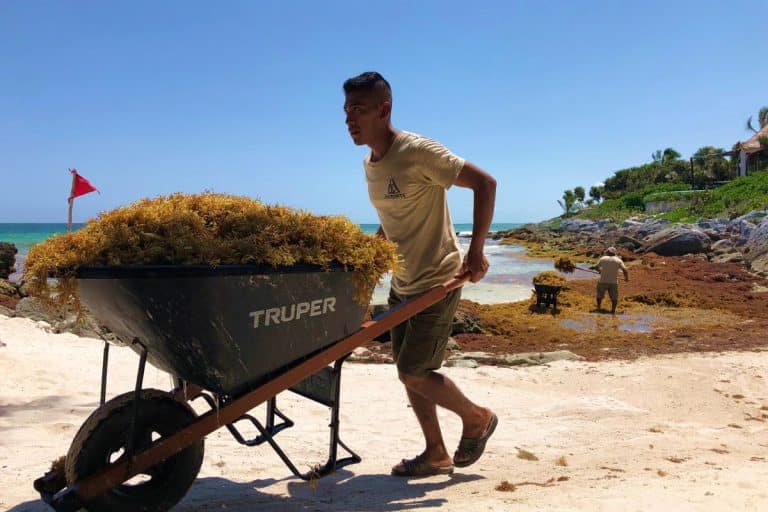The Great Atlantic Sargassum Belt had an estimated 13 million metric tons of algae at the end of March, according to the Optical Oceanography Lab at the University of South Florida, setting a new record for the period.
Weather.com scientists say large-scale beaching events are “inevitable” this summer in Florida, the Caribbean and Mexico as the stinky kelp grows larger. Officials predict the giant bloom will peak between June and July.

“Given the complexity of its motion, growth, and decay, it is not possible to forecast the timing of beaching,” a National Oceanic and Atmospheric Administration spokesperson said. “However, given the size and number of the current Sargassum patches, there is a strong chance that Sargassum carried by the Florida Current may reach the Florida coast despite wind and wave conditions.”
Update from Delray Beach, FL

The Quintana Roo Sargassum Monitoring Network responded to the USF investigation, stating that the heaviest landfall this summer was expected to weigh 650,000 tons and have an impact on the beaches in Tulum, Playa del Carmen, Puerto Morelos, Cancun, Mahahual, and Xcalak.
Update from Puerto Morelos, Mexico

Esteban Amaro, the network’s director, told Reportur.com that he thinks only 5% will reach Mexican beaches, while the other 90% will “continue on its way to the Sargasso Sea”.
As sargassum seaweed rots, it begins to release hydrogen sulfide, which can irritate the eyes, nose, and throat as well as smell like rotten eggs. It is strongly recommended that visitors do not touch or swim near the seaweed.
The installation of 9,050 meters (about 29,691 feet) of anti-sargassum barriers, including 1,850 meters in Othon P. Blanco (Chetumal and Mahahual), 2,400 meters in Puerto Morelos, 2,500 meters in Solidaridad (Playa del Carmen and Puerto Aventuras), and 2,300 meters in Tulum, was announced by the Mexican Secretary of the Navy in March.

